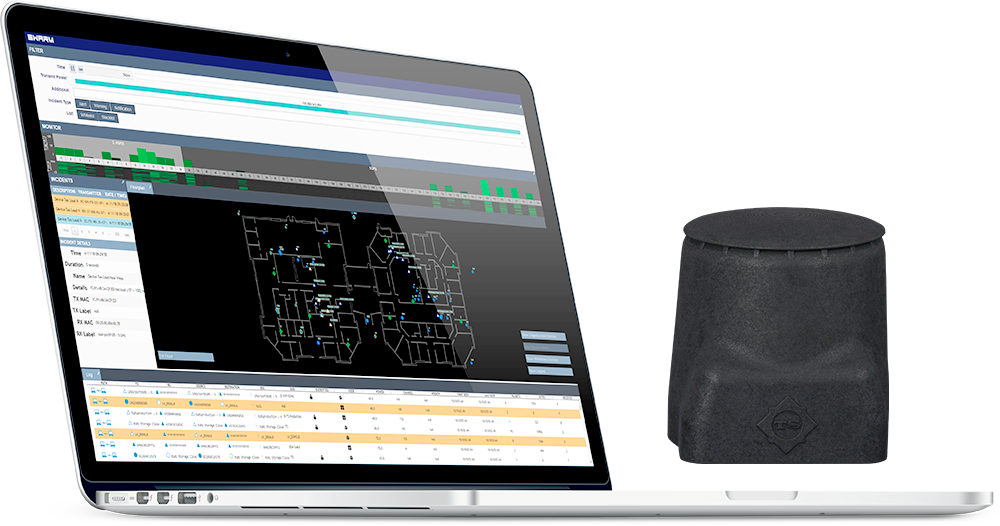Products
Request Information
SWARM Wi-Fi Intelligence/Counterintelligence Software
SWARM Wi-Fi Intelligence/Counterintelligence Software

Swarm aggregates data from WASPs to provide a complete operational picture, including geolocation and metadata overview.
Supporting Wi-Fi and RF Security Missions
SWARM is a Wi-Fi activity monitoring and characterization tool designed specifically for recording the Wi-Fi environment and discovering potential Wi-Fi–based threats within that environment. SWARM processes the in-the-clear metadata of each transmitted Wi-Fi frame, revealing:
- Wi-Fi networks present, infrastructure as well as peer-to-peer (ad hoc)
- Devices connected to or attempting to connect to each Wi-Fi network
- Volume of data sent to and received from other Wi-Fi devices
- Wi-Fi networks to which some devices have previously connected
- Location of the transmitting devices
- and more
Through cooperative geolocation and RF modeling, SWARM can identify the location of transmitting Wi-Fi devices. All of this can be done without examining the content of that Wi-Fi communication, beyond the protocol headers.
Wi-Fi Security with Counterintelligence in Mind
Traditional WIDS/WIPS and Wi-Fi security systems focus only on the Information Assurance and Wi-Fi network attack security mission, only capturing information about activity deemed threatening. SWARM captures a much fuller picture, revealing how Wi-Fi devices and their data are moving through the environment. And that view can be fully customized to ensure you see just what you need to see, including the ability to filter on blacklists, whitelists, power levels, channels, MAC addresses, and threat level.
Automated Alerts to Threats and Forensic Analysis
SWARM can be configured to provide application, email, and text alerts when suspicious activity is detected, such as unauthorized devices in a facility, authorized devices in an unauthorized area of a facility, devices transmitting at a higher power level than permitted, and the presence of peer-to-peer (ad hoc) networks. And because the Wi-Fi environment has been monitored and its metadata recorded, suspicious events can be searched for and replayed in the context of overall Wi-Fi activity at that moment in time or across time, letting you discover what other devices, locations, and individuals may have been involved, for example, by cross-referencing Wi-Fi activity with facility security camera footage.
Further, this recorded Wi-Fi information can also be used to generate pattern-of-life information, yielding a deeper understanding of the Wi-Fi environment and aiding in the detection of changes to that environment.

